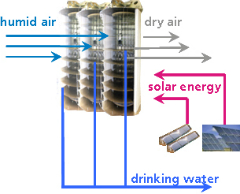Deprecated: Return type of ElementRepeatable::count() should either be compatible with Countable::count(): int, or the #[\ReturnTypeWillChange] attribute should be used to temporarily suppress the notice in /home/pablo/www/media/zoo/elements/repeatable/repeatable.php on line 353
Deprecated: Return type of ElementRepeatable::seek($position) should either be compatible with SeekableIterator::seek(int $offset): void, or the #[\ReturnTypeWillChange] attribute should be used to temporarily suppress the notice in /home/pablo/www/media/zoo/elements/repeatable/repeatable.php on line 360
Deprecated: Return type of ElementRepeatable::current() should either be compatible with Iterator::current(): mixed, or the #[\ReturnTypeWillChange] attribute should be used to temporarily suppress the notice in /home/pablo/www/media/zoo/elements/repeatable/repeatable.php on line 325
Deprecated: Return type of ElementRepeatable::next() should either be compatible with Iterator::next(): void, or the #[\ReturnTypeWillChange] attribute should be used to temporarily suppress the notice in /home/pablo/www/media/zoo/elements/repeatable/repeatable.php on line 329
Deprecated: Return type of ElementRepeatable::key() should either be compatible with Iterator::key(): mixed, or the #[\ReturnTypeWillChange] attribute should be used to temporarily suppress the notice in /home/pablo/www/media/zoo/elements/repeatable/repeatable.php on line 333
Deprecated: Return type of ElementRepeatable::valid() should either be compatible with Iterator::valid(): bool, or the #[\ReturnTypeWillChange] attribute should be used to temporarily suppress the notice in /home/pablo/www/media/zoo/elements/repeatable/repeatable.php on line 337
Deprecated: Return type of ElementRepeatable::rewind() should either be compatible with Iterator::rewind(): void, or the #[\ReturnTypeWillChange] attribute should be used to temporarily suppress the notice in /home/pablo/www/media/zoo/elements/repeatable/repeatable.php on line 345
Part 1

Deprecated: Optional parameter $view declared before required parameter $params is implicitly treated as a required parameter in /home/pablo/www/components/com_jem/classes/output.class.php on line 848
Deprecated: Creation of dynamic property Joomla\CMS\Object\CMSObject::$filter.state is deprecated in /home/pablo/www/libraries/src/Object/CMSObject.php on line 197
Deprecated: Creation of dynamic property Joomla\CMS\Object\CMSObject::$list.limit is deprecated in /home/pablo/www/libraries/src/Object/CMSObject.php on line 197
Deprecated: Creation of dynamic property Joomla\CMS\Object\CMSObject::$filter.context is deprecated in /home/pablo/www/libraries/src/Object/CMSObject.php on line 197
Deprecated: Creation of dynamic property Joomla\CMS\Object\CMSObject::$filter.assigned_cat_ids is deprecated in /home/pablo/www/libraries/src/Object/CMSObject.php on line 197
The best-selling science fiction novel in history, is the Hugo and Nebula Award winning Dune (Frank Herbert, 1965).
It is also noted as the first major ecological science fiction novel, because the story contains many descriptions of the life that inhabits the desert planet Arrakis, in a complex and unique dry-land ecology that includes giant sandworms and the Fremen. Dune explores the interactions of politics, religion, ecology, technology, and human emotion, and had a great influence on the environmental movement in the years immediately after it was first published.
Among the multitude of sweeping, inter-related themes and multiple character viewpoints, there are continuous reminders for the reader, of how moisture is very precious to the people who live there. The struggle to survive forces the Fremen to rely on highly efficient means to conserve, reuse, and in general, capture every drop of available water in order to sustain life. Their use of body-enclosing garments known as Stillsuits, allows them to maintain and reclaim their body moisture in the harsh environment.
They also utilize another way to get water, which is a device known as a windtrap, that precipitates moisture from the air. Windtraps have been used here on Earth by the desert dwellers of the Middle East for thousands of years, so Herbert was basing his creative invention on a known technology that works because of how moisture in the air condenses in the cool nighttime temperatures, and can be collected. You are also likely to have heard of a solar still, which works on the same principles.
Recently, scientists from the Fraunhofer Institute for Interfacial Engineering and Biotechnology, have found a way of collecting drinking water from air humidity, using an automated process that could be sustained through thermal solar collectors and photovoltaic cells, so that it would be able to run with no external power source.
Producing Drinking Water From Air Humidity
The process uses a brine solution which would absorb moisture from the air as it runs down a tower-shaped structure. At the bottom of the tower, the hygroscopic (moisture laden) saline would be sucked into a tank that contains a de-pressurized vacuum, where the boiling point of liquid is lower than it would be under normal atmospheric pressure. This effect is present at high altitude in the mountains, where water boils at temperatures below 100 degrees Celsius. When the solution boils, it would evaporate as non-saline water, and then be condensed back into a volume controlled tube, which would continue to produce the vacuum because of the gravity of the water column in the tube. This is also why no vacuum pump would be needed, and the end of the cycle occurs when the reconcentrated brine runs back down the tower again, absorbing moisture from the air.
The concept could be built as single person units, or as larger water producing installations which could supply an entire hotel. Prototypes of the major system components, including air moisture absorption and vacuum evaporation, have already been tested in the laboratory. The next step will be to build an actual facility, which will demonstrate proof of the concept.
Warning: Cannot modify header information - headers already sent by (output started at /home/pablo/www/plugins/system/zlframework/zlframework/helpers/zlfw.php:997) in /home/pablo/www/libraries/src/Input/Cookie.php on line 100
Warning: Cannot modify header information - headers already sent by (output started at /home/pablo/www/plugins/system/zlframework/zlframework/helpers/zlfw.php:997) in /home/pablo/www/libraries/src/Input/Cookie.php on line 100
Deprecated: Creation of dynamic property Comment::$name is deprecated in /home/pablo/www/administrator/components/com_zoo/helpers/tree.php on line 33
Deprecated: Creation of dynamic property Comment::$alias is deprecated in /home/pablo/www/administrator/components/com_zoo/helpers/tree.php on line 34







